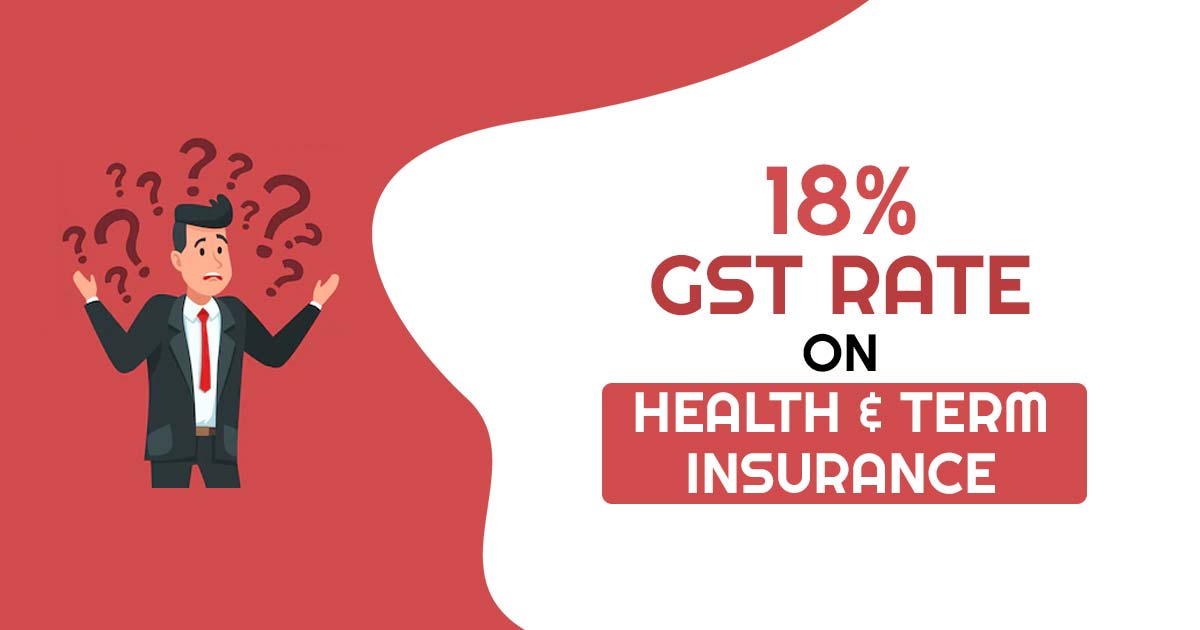How High Premiums And Low Settlements Are Forcing People To Move Out Of Health Insurance? Is Health Insurance In India An Organised Scam?

During life’s uncertain times, there are few shocks as costly as an unexpected medical crisis. You’ve paid your health insurance for years, perhaps even decades—forgoing vacations and skipping extras, all to ensure that when you do fall ill (not if, but when, because that’s life), you won’t have to choose between receiving treatment and financial ruin. Then reality strikes. You’re wheeled into a hospital, insurance documents quivering in your hands, only to discover that your safety net has more holes than substance.
Welcome to the bewildering universe of health insurance in India, where premiums increase like they’re ascending Everest while getting claims settled appears to require a miracle.
The health insurance sector in India is facing what can only be described as an existential crisis of its own making. For the average Indian citizen, once the basic necessities of food and shelter are secured, the specter of catastrophic healthcare expenses looms large on the horizon of financial anxieties. Medical emergencies are precisely why middle and lower-middle-income families often prioritize saving rather than spending—a cultural trait that economists have noted for decades. Health insurance was supposed to be the solution to this problem, the financial equivalent of a safety harness when life pushes you off a cliff. But increasingly, the harness is becoming so expensive that many are choosing to take their chances with the fall.

Over the last few years, there has been a disturbing trend in India’s health insurance business: the vast majority of policyholders are terminating their coverage. High premiums and the additional cost of Goods and Services Tax (GST) are typically the culprits accused, but money problems only give half the narrative. The damaging mix of rising costs with increased claim rejections and the view that coverage is insufficient is making people wonder if insurance is worthwhile. This isn’t just a market shift—it’s a distrust of a mechanism that promises protection but injects uncertainty.
Take the example of Subhadip Ghosh, a 38-year-old Kolkata employee. His story is typical of the dilemma that most face. In 2016, Ghosh took what he thought was a prudent money move: he bought a family floater health insurance policy for Rs 5 lakh for an annual premium of Rs 22,000 a year.
Now, in 2025, the premium for the same cover has gone up to Rs 78,000—a jump that makes him wonder if he can continue to pay for his family’s health cover. “How many Indians can afford this?” Ghosh asks, echoing the anger of many others. Even with a 10% no claim rebate, his outgoings have nearly doubled since the pandemic. The numbers just don’t add up for his family budget anymore.
Ghosh’s case is not unique and there are many more. Srishti, a legal expert based out of South Delhi, began questioning the value of health insurance after she found out that her friend’s claim had been rejected by the insurance company. Despite paying nearly Rs 3 lakh a year for Rs 40 lakh of cover, Srishti decided to cancel her policy altogether.
“We’re paying nearly Rs 3 lakh a year. Then a claim is rejected, and your cover means nothing,” she says, demonstrating the fundamental issue of trust when insurance fails to provide its fundamental function. For Srishti and thousands like her, choosing to opt out of the insurance system wasn’t a simple decision—it came after years of paying premiums on a regular basis only to find that when it mattered most, the system too often won.
The statistics paint a dismal picture of this exodus. According to figures from Policybazaar, nearly 10% of health insurance policies that experienced premium increases of 30% or more in the past year were not renewed. That is particularly frightening when one considers the fact that health insurance coverage in India is abysmally low, with just 51% of the population covered, in spite of the recent spate of government health schemes.
As insurers keep raising premiums out of the reach of ordinary people, the number of individuals who can afford decent coverage keeps dwindling, creating a vicious cycle that undermines the very essence of the insurance model.

If we look back at the past, insurance has always worked as a mechanism of people sharing risks among themselves. This has been the idea since ancient Babylonian traders who would pay extra to lenders to ensure their loans would be waived if their shipment was stolen. Chinese merchants around 3000 BC would split their goods across several ships to reduce losses in the event of shipwrecks.
These early plans were based on a simple idea: many people give money so that a few unfortunate ones who meet with disasters can be helped. But the existing health insurance business in India seems to have lost track of this simple idea, instead of trying to take as much money as possible and paying out less by adding more rules and restrictions.
Denial of claims is perhaps the most unsettling characteristic of health insurance today.
Take the case of Rupesh Sharma, a 42-year-old IT professional living in Mumbai. His health insurance policy had seemed like a good deal until he had gallstone surgery in 2024. Even though he had a cover of up to Rs 10 lakh, his insurer paid only Rs 1.8 lakh of his Rs 2.5 lakh hospital bill.
He had to pay heavy out-of-pocket charges that he had purchased insurance to escape. “I had no idea about the fine-print clauses that resulted in denial of preoperative tests and doctor consultations,” says Sharma. He also says that it took him over two months and numerous follow-ups to get even a partial refund for his outlay after he was discharged from the hospital.
This trend of claim denials has generated a deep sense of mistrust towards insurance companies. “I must have paid more than Rs 6 lakh in premiums for my family over 10 years, and not once have I gained from it,” Sharma says, a sentiment shared by many long-term policyholders. His experience is not unlike that of many others who have paid their premiums year after year, only to discover that when they need to make a claim, the terms make it extremely difficult to win. It is like Charlie Brown repeatedly trusting Lucy’s assurance to hold the football, only to have it snatched away at the last moment—except here, the penalty is losing money and receiving healthcare.
This feeling of disillusionment has caused some people, like Srishti, to turn to alternative ways of managing their money. Instead of continuing to pay for insurance that seemed unlikely to help her when she needed it most, she chose to put her premium payments into a standard deposit with her bank. This has its downsides—were she to become seriously ill, even significant amounts of money would likely run out fast—but it shows that more and more people feel that conventional insurance might not offer the protection it guarantees.
The outrage goes beyond the denial of claims; it also covers the very economics of health insurance in India today. “Soon, I’ll be paying more in real money than what I have as coverage,” says Ghosh, pointing out how ridiculous it is that over time, premium payments might be greater than the value of the coverage itself.
If we look at other countries and history, we can observe other methods that more evenly balance the interests of the insurance companies and the people they insure.
- Germany’s “sickness funds,” started in the 1880s under Bismarck, created one of the first national health insurance systems in the world. In this system, coverage was tied to work, and employers and employees split the costs.
- Japan’s post-World War II system provided universal coverage by combining employer-based coverage with government programs for those not yet covered by work.
- Even the United States, not exactly renowned for good access to medical care, has passed regulations such as the Medical Loss Ratio requirement. This regulation requires insurance companies to spend at least 80-85% of premium dollars on medical care, not on administrative costs or profits.
The 18% GST on health insurance premium has made it even more difficult for the policyholders. Srishti refers to the GST on her Rs 3 lakh annual premium as “a cruel joke,” and everybody else agrees, labeling taxes on health cover as unjust.

Consider Bhumi Shah of Ahmedabad, who has witnessed her premiums increase exponentially over the years. What began as a Rs 12,000 premium for a Rs 5 lakh family floater cover in 2010 now comes to Rs 48,000 for the same cover, prompting her to question her insurance decisions. “The premium is too expensive every year, but one also desires an insurance cover. The fear of not having it makes me feel insecure,” she says, describing the tough choice that many Indians have to make today.
Industry professionals are of the opinion that premiums have increased more than two-fold in the past five years, and senior citizen policies registered the maximum increases. This, with the added burden of GST, has made it difficult for most consumers to keep insurance within reach. “The 18% GST burden is loaded on top. Although Section 80D of the Income Tax Act offers a rebate of up to Rs 25,000 on the premiums, it hardly comes close to offsetting the increased premium charges,” says an Ahmedabad-based insurance consultant. The tax relief is good, but it cannot match the steep increase in premium charges, particularly in families with elderly members who pay the highest charges.”.
Healthcare has transformed from a service performed out of charity to a business over decades.
During medieval Europe, religious organizations and churches offered healthcare mainly as a charitable act. With the Industrial Revolution, companies started offering healthcare to keep their workers healthy. During the 20th century, the majority of governments started getting involved, creating national health services or insurance programs.
India’s history of healthcare is complicated; some public healthcare systems were established under colonial rule, then after independence, public healthcare grew, and then later, private healthcare and insurance grew rapidly during liberalization. The problems that we have today are partly because of this mixed development, resulting in a situation where public services and private insurance do not cover the majority of the population.
As expenses continue to pile up, individuals are seeking different means to manage their healthcare bills. Varsha, a 42-year-old marketing executive in Jaipur, has begun investing her savings in Systematic Investment Plans (SIPs). This makes her rely less on expensive corporate top-ups and personal insurance. Others, such as Bhumi, are attempting to raise their coverage by modifying their policies or negotiating a better rate from another insurance firm. For Bhumi, switching to a policy that covered her parents enabled her to reduce her premium while covering her aging parents more adequately—a shrewd means of covering an increasing cost.
But transforming in such a manner has enormous risks that many policyholders may not entirely understand. Switching to new insurance policies for better rates typically entails waiting out coverage of pre-existing conditions and other restrictions that can leave people vulnerable when they need it most.
Ashish Soni, MD of Troth Insurance Broking, adds that insurers don’t typically offer family floater policies for dependents over the age of 65. This forces policyholders to switch to individual policies that are far more costly. For older people like Madhusudan Arora, who was forced to drop his policy because the premiums were too high, the lack of good options means being uninsured when they are more likely to need medical care—a very scary prospect in a country where paying for healthcare out of pocket can quickly drain a lifetime’s worth of savings.
If we examine the world’s history of financing healthcare, we can identify a number of successful examples of models that have done well on sustainability and access.
- The United Kingdom’s National Health Service, initiated in 1948, provides universal care paid for largely out of general taxation.
- Canada’s single-payer system, initiated in the 1960s and implemented in a number of provinces, ensures all citizens receive required medical care based on need, not ability to pay.
- Singapore’s innovative system relies on government assistance combined with mandatory savings accounts (Medisave) and insurance for major health problems (MediShield), which offers multiple layers of coverage and personal responsibility.
All have weaknesses, but all have succeeded in better, less expensive coverage for individuals than India’s current mixed model.
Most people do not approve of India’s health insurance system and are calling for radical reforms. Ghosh believes that the government must make improved regulations on private hospital prices and help insurance firms negotiate lower rates from medical providers—ideas that have proven elsewhere.
A trip to a hospital shows one major failure in the existing system: “When a patient goes into the hospital, the first thing asked is if one has insurance.” This simple question commonly determines how much the patient will pay, with insured patients commonly being charged large sums that reach their ceilings. Also, most costs such as tests and scans may be designated “out of pocket expenses” that do not show up on the actual bill but must be paid by the patient.
“The government needs to monitor private hospitals closely. Insurers need to negotiate lower prices from hospitals,” contends Ghosh. “Why can’t we have fixed prices for procedures? There can be some flexibility, but if someone is going in for, say, an angioplasty, he or she needs to be informed that the price will not exceed a certain amount, no matter where they go.”
This idea of fixed prices for fixed procedures has worked well in many healthcare systems around the world, most notably in Germany’s diagnosis-related group (DRG) system, where fixed payments are made for specific treatments regardless of the actual cost incurred by the hospital. These arrangements help to make things transparent and predictable to patients and insurers alike, and reduce the risk of surprise bills and claims disputes.
The dynamics among insurance companies, healthcare providers, and patients in India today are far from the way most service sectors operate. “The health insurance industry has reversed ‘consumer is king’ on its head. Here, the consumer is a beggar,” Ghosh says, highlighting the staggering power imbalance of the system today. In other consumer markets where firms fight to gain customers’ loyalty and satisfaction, health insurance in India operates as if policyholders should be grateful for whatever coverage they get, regardless of how much they pay or what restrictions are put on it.
This is a far cry from what insurance was originally intended to achieve. Insurance was meant to spread risk throughout a large number of people to provide protection to them against huge financial losses. Early health insurance plans, such as the “friendly societies” of 19th-century America and Britain, were member-owned associations that existed solely to benefit members. Commercial insurance companies today operate differently but also have a duty to uphold their primary promise: to provide financial protection for paying regular premiums. When this promise is too often not kept by denying claims, reducing coverage, and increasing premiums too much, it undermines the entire concept of insurance.
The scenario in India today is exactly the same as existed in the United States before health insurance reforms. There existed practices like rescission, or the practice of policy cancellations after claims had been filed, and pre-existing conditions exclusions. These practices left many exposed even after years of paying for their insurance. It took far-reaching government intervention, leading to the Affordable Care Act of 2010, to tackle these issues and bring in better standards for insurance cover. India can also have to take similar government measures if it is to re-establish confidence in health insurance.
As we look to the future, it’s clear that things cannot go on as they are in India’s health insurance sector. The ongoing erosion of policyholders, especially those who have been insured for years without ever making a claim, erodes the collective risk pool that makes insurance possible. When healthy people cancel their coverage because premiums are too high and they don’t have much faith in getting claims paid, the pool that remains becomes more and more concentrated on higher-risk individuals. This puts us into a vicious cycle of rising premiums and more people dropping out of the system.
Breaking the cycle will need the concerted action of many disparate groups. Insurers need to realize that they can continue to prosper in the long term by restoring confidence with open policies, reasonable premium rates, and open claims processes. Hospitals need to end their policy of varying charges according to insurance and begin utilizing open and standardized fees for ordinary care. And government regulators need to set and adhere to rules that shield consumers from deceptive practices while maintaining the health of the insurance market.
Mahatma Gandhi was a master of words and once stated, “A customer is the most important visitor on our premises. He is not dependent on us. We are dependent on him.” Until India’s health insurance sector takes this to heart and realizes its fundamental charter is to look after policyholders, not merely collect their money, the question at the beginning of this debate will continue to plague us: Is health insurance in India an organized scam?
For numerous policyholders who have paid their premiums in good faith only to be left high and dry when they needed assistance, the answer is becoming more apparent. The time for genuine change is now—before the confidence between insurers and the insured is irreparable.




